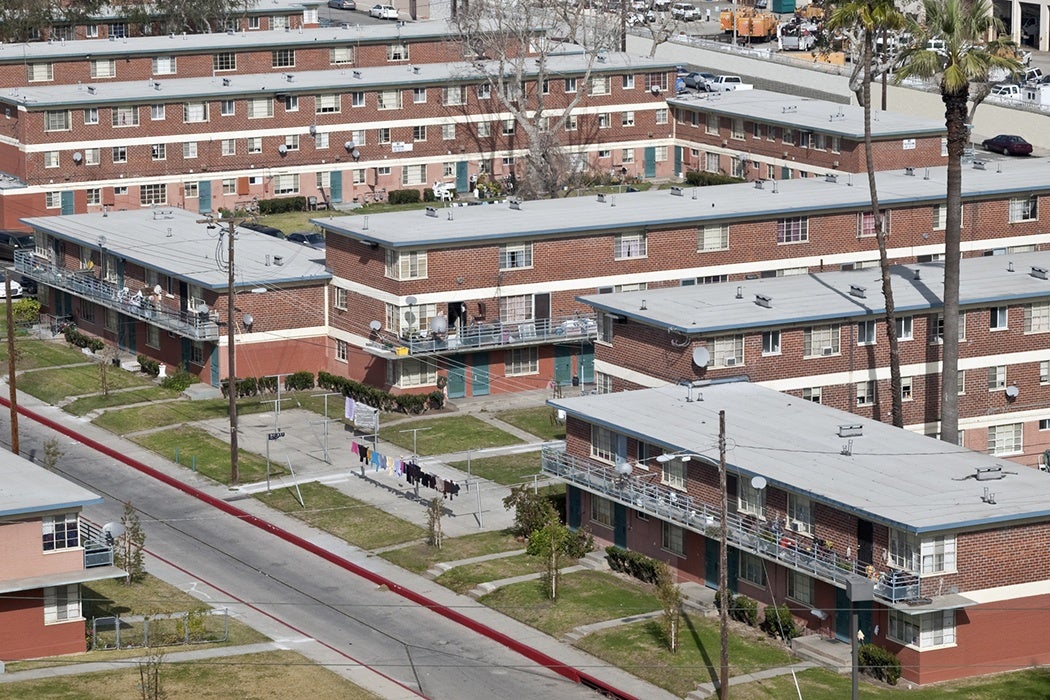In much of the country, public housing is disappearing as governments fail to maintain the buildings or actively demolish them. That’s a disaster for many low-income people, who have nowhere else to go. But it’s hard to find much public support for maintaining the housing—let alone building more. In a 1995 paper, Peter Marcuse looked at the roots of this antipathy through the lens of New York City’s historical experience.
The first U.S. public housing was a product of the Great Depression, Marcuse writes. And, like all the big new government programs of the time, it was politically plausible for one reason: desperation. Building housing projects offered jobs to the jobless. The homes themselves would house the impoverished, who might otherwise threaten the country.
“All revolutions are germinated in the slums: every riot is a slum riot,” Langdon Post, the first chair of the New York City Housing Authority, wrote in 1936. “Housing is one of the many ways in which to forestall the bitter lessons which history has in store for us if we continue to be blind and stiff-necked.”
The first housing projects were racially segregated, and residents were highly regulated. The authorities banned single parents, including widows, and inspected the previous homes of prospective tenants to make sure they had good housekeeping habits.
Despite some complaints about creeping socialism, the projects had a broad base of support, in New York and elsewhere. In Brooklyn, Marcuse writes, a local merchants’ association was enthusiastic about the construction of the Williamsburg Houses because they saw the new residents as a big market for their wares.
As the Depression-era housing crisis passed, construction slowed. But it resumed stronger than ever when troops returned from World War II. With veterans’ mortgage subsidies luring young white families to the suburbs, the city built public housing at the fastest rate ever in an effort to keep this middle-class group within its borders.
The focus of city public housing programs changed dramatically in the 1950s. Under the leadership of city planner Robert Moses, the city demolished “slums,” and built new high-rise housing projects to house their former residents. The imposing buildings also served as “a buffer between redeveloped areas and adjacent blight,” Marcuse writes. “For the first time, public housing began to be seen as an ‘underclass’ program.”
Weekly Newsletter
It also became a controversial program. Backed by public outcry in the civil right era, advocates pushed for housing that better met residents’ needs: low-rise, smaller buildings, scattered around the city, with racially integrated tenants. But they met severe opposition, including conflict with the federal government that resulted in a loss of funding.
In the decades that followed, production of public housing in New York City and across the country, eventually ground to a halt. Tarred as a benefit for poor black and brown people, the buildings lost support and went underfunded and poorly maintained. In a vicious cycle, that encouraged the public to dismiss public housing as a program that wasn’t worth saving.







